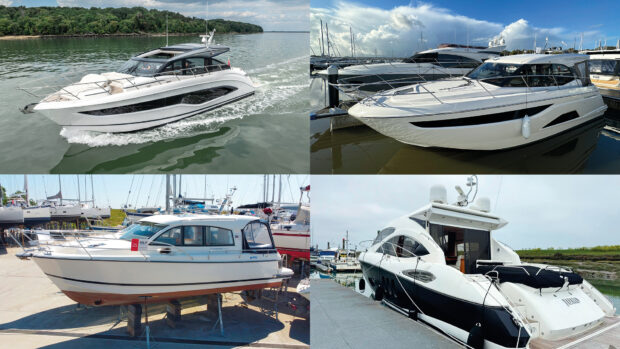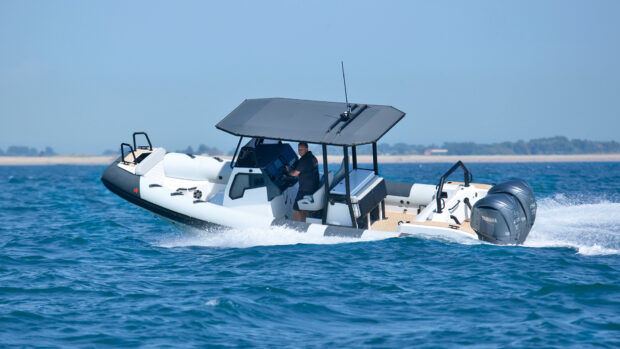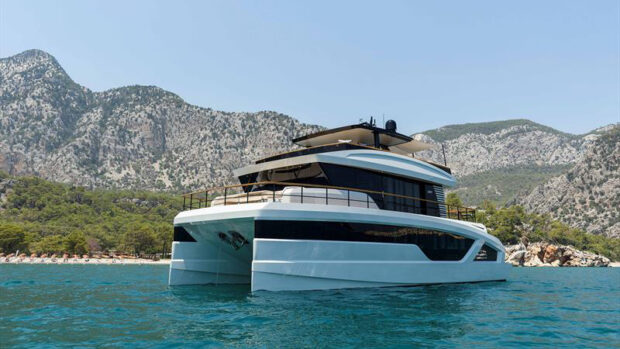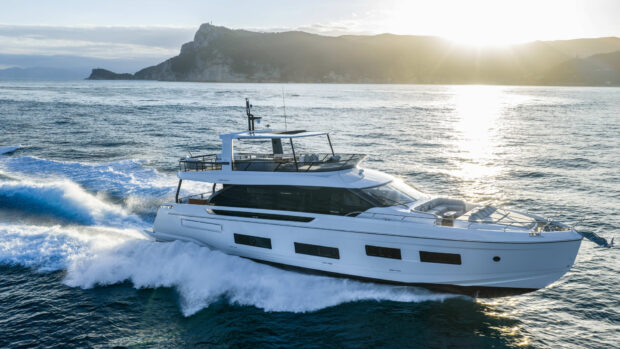Watersports users are at a very high risk of sunburn and skin cancer, here's everything you need to know about avoid getting burnt
Sunburn is the body’s reaction to excessive ultraviolet radiation from the sun. Some people are more susceptible to it than others due to differing skin types. This is largely down to genetics, which control the amount of melanin your skin produces.
Melanin is the body’s natural defence against sunburn and works by darkening the skin. That’s why fair skinned people (and children) tend to burn quicker than darker skinned ones. It’s also why some people tan quicker than others.
Whether you are light or dark skinned, protection from the sun in the form of sun protection clothing or in picking the best waterproof sunscreen you can find is a non-negotiable, even if it’s a precaution.
Are you more susceptible to sunburn on the water?
Unfortunately you are more susceptible to sunburn on the water for two reasons. Firstly, because boating and watersports ares primarily outdoor activities you are more exposed to the sun’s UV rays and secondly because water reflects the sun’s rays almost as well as a mirror, effectively doubling the exposure you get on dry land.

Photo: Getty Images
Is sunburn dangerous?
Not in the short term. Mild sunburn, medically defined as First Degree sunburn, is confined to the skin’s outer layer (epidermis) and usually heals within a few days. It is best treated by cooling the skin down (a quick dip in the sea can help), moisturizing it while still wet and if necessary taking an anti-inflammatory medicine like ibuprofen or applying a mild (1%) hydrocortisone cream.
Severe sunburn is more problematic as it also affects the mid-layer (dermis), causing blisters which may take weeks to heal. Third degree sunburn is extremely rare, penetrating right through to the fat layer beneath your skin and damaging nerve endings.
The trouble is that even mild sunburn significantly increases the risk of developing skin cancer in the longer term. A single blistering sunburn in childhood or five mild sunburns more than doubles your risk of developing a potentially fatal melanoma later in life.
Article continues below…

Best waterproof sunscreen for boaters and watersports enthusiasts

Best boat cover: 6 of the best options for protecting your cockpit
Is skin cancer on the rise?
Yes, melanoma skin cancer rates in the UK have risen by a third in the last decade and are projected to reach a record high this year of more than 20,000 cases. More frequent foreign travel, misconceptions about tanning making you look healthy and an ageing population are thought to be the primary causes.
The incidence of less serious but more common non-melanoma skin cancers is also increasing with over 230,000 cases diagnosed in the UK last year.
Skin cancer is now the most frequently diagnosed type of cancer around the world and the fifth most common cancer in the UK. This trend is repeated across all age groups and sexes but is most prevalent in people over the age of 80 (up 57% in the last decade) with men being slightly more at risk than women. For adults between the ages of 25-49 the rise is still a troubling 7%.

There is a wide range of sunscreen choices from oil sprays to gels and creams. Photo: Getty Images
What is melanoma and non melanoma?
Melanomas develop in the skin’s pigment producing cells (melanocytes) and can appear as a new mole or a notable change in an existing one such as the size, colour, shape or feeling (pain, itchiness etc). They are most commonly found in areas exposed to the sun such as the face, hands, arms, legs and back. Although less common than non melanomas they are more prone to spreading to other parts of the body and pose a greater risk to life.
Non-melanomas develop in other skin calls such as basal or squamous cells. These usually appear as small red lumps of flat, scaly patches that don’t heal after 4 weeks or more. They are less prone to spreading and more easily treated, usually by surgical removal.
Is skin cancer preventable?
Absolutely, 86% of melanomas are caused by over exposure to UV rays, usually due to cumulative sun damage over time (one of the reasons older people are more prone to it). In theory all of these cases are therefore preventable by taking appropriate precautions in the form of shade, sun clothing or a good sunscreen.
Most open boats are now fitted with a collapsible bimini shade, while more permanent T-Top or Hard Top structures are an increasingly common sight on sportsboats and cruisers. However, even these can’t protect you against UV rays reflected from the sea’s surface so some form of additional sunscreening is a sensible precaution.

Are all UV rays dangerous?
Technically there are three types of ultraviolet light: UVA, UVB and UVC but as UVC doesn’t penetrate the earth’s atmosphere, we only need to concern ourselves with UVA and UVB. Of the rays that do reach the earth’s surface, 95% are UVA and only 5% UVB. However, it’s the UVB rays that cause sunburn.
UVA rays, while less harmful in the short term, still cause longer term skin damage, leading to premature signs of aging such as wrinkles and DNA deformities, which increase the risk of skin cancer. UVA can also penetrate cloud cover and even windows. That’s why it’s advisable to use a broad spectrum sunscreen that protects against both UVA and UVB rays.
What does SPF mean?
Sun Protection Factor is the means of measuring the effectiveness of a sunscreen against UVB only, whether that’s a lotion or a piece of clothing. The SPF number is effectively a multiple of how long it takes before you burn, so if you are fair skinned and normally burn within 15 mins, applying sun cream with an SPF10 will extend that to 150 minutes, while an SPF20 will increase it to 300 minutes.
However, this only works if you apply the correct amount at the correct time and don’t wear it off through swimming, sweating, rubbing etc. Most health professionals now recommend using SPF20 or higher regardless of skin type.
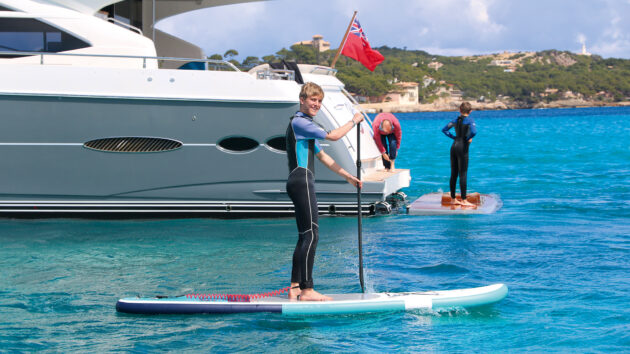
What’s the difference between a physical and chemical sunscreen?
Sunscreens fall into two main groups; physical sunscreens (sometimes referred to as mineral sunscreens) and chemical sunscreens.
As the name suggests, physical sunscreens sit on the skin’s surface and act as a barrier, blocking the sun’s rays from reaching your skin by absorbing and reflecting UV light. The most common ingredients are titanium dioxide and zinc dioxide, which give it a distinctive white, chalky appearance.
Chemical sunscreens are absorbed into the skin and work by chemically converting the UV rays into heat that dissipates naturally. They tend to be clearer and lighter, typically in oil or gel form, so they can be easily absorbed into the skin. The most common active ingredients used are oxybenzone, octinoxate and avobenzone.

Photo: Paul Wyeth
Are mineral or chemical sunscreens best?
Both are equally effective at blocking out UV rays provided you apply them correctly but which you choose depends on a number of factors.
Physical sunscreens start working straight away and can be gentler on sensitive skin. However, they tend to be thicker, less easy to apply and leave a distinctive white cast on the wearer.
Chemical sunscreens tend to be easier to apply but take longer to bond and are slightly more prone to causing irritation or allergic reactions.
Both are equally suitable for boating but if you also enjoy swimming, it’s important to look for a water resistant chemical sunscreen or a robust physical one that doesn’t rinse or sweat off easily.
Hybrid sunscreens use a combination of both to give comprehensive cover.
The key is to find one you are comfortable using, as much like wearing a lifejacket, it’s only any good if you use it.
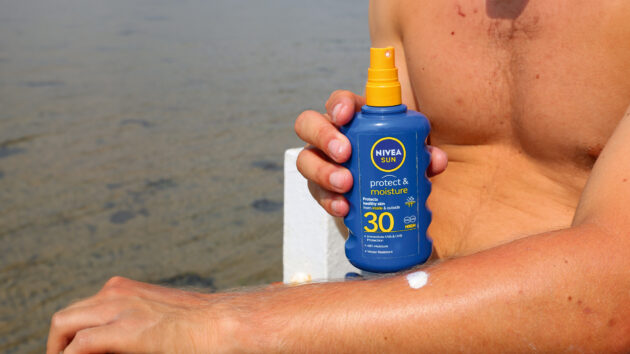
When and how much screen should you apply?
You should apply sunscreen at least 20-30 minutes before exposure to the sun as it can take a while for chemical based sunscreens to bond with the skin. Typically the correct dosage is one teaspoon (5ml) per body part such as a leg, arm, chest, back and face. Use too little or apply it unevenly too late and you can still get sunburnt. This should be reapplied every 2-3 hours, especially after swimming, excessive sweating and towel drying.
Does sunscreen harm marine life?
Some can pose a threat to marine organisms, especially coral reef ecosystems. Reported side effects include coral deformities, reduced fertility and growth hindrance. The primary culprits are said to be oxybenzone and octinoxate, both of which were commonly found in some mass market sunscreens.
As a result, in 2021 Hawaii banned the sale of sunscreens containing either of these chemicals. Many sunscreens now carry a reef-safe or reef-friendly label for that reason.
 If you enjoyed this….
If you enjoyed this….
Motor Boat & Yachting is the world’s leading magazine for Motoryacht enthusiasts. Every month we have inspirational adventures and practical features to help you realise your sailing dreams, as well as tests and news of all the latest motorboats.
Plus you’ll get our quarterly Custom Yachting supplement where we share the last on offer in the superyacht world and at the luxury end of the market.
Build your knowledge with a subscription delivered to your door. See our latest offers and save at least 30% off the cover price.



 If you enjoyed this….
If you enjoyed this….